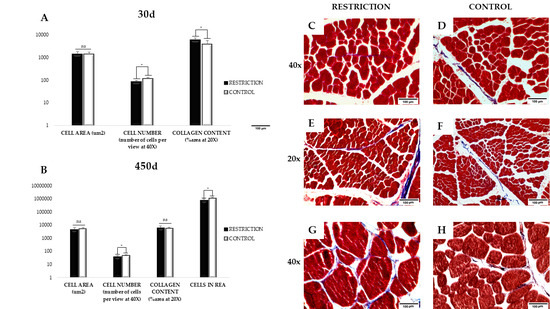Ito Cells Collagen
Modulationofcollagen production however afterin vivoad-ministrationofretinoicacid wasassociatedwithadecreasein type I collagen mRNAabundance whereas in cultured Ito cells retinoic acid administration does not appearto change. It has been observed that Ito cells in vitro undergo phenotypical changes activation similar to those noted in vivo during the development of liver fibrosis.

Endoplasmic Reticulum Oxidase 1a Is Critical For Collagen Secretion From And Membrane Type 1 Matrix Metalloproteinase Levels In Hepatic Stellate Cells Journal Of Biological Chemistry
7023mm2 as compared to the control group 449.

Ito cells collagen. Serum-stimulated incorporation of I3H1- thymidine into DNA of MFBIC was dose-dependently de- creased by both cytokines. T3 induced a 34-fold reduction in type I collagen production. Because conflicting data have been published on the amount and different types of collagens synthesized by Ito cells in vitro collagen biosynthesis was studied at different activation stages on both the protein and RNA levels.
And it s activity was known to be regulated by the expression of various genes. Interferon alfa and gamma inhibit proliferation and collagen synthesis of human Ito cells in culture. Ito cells togetherwithcollagen andTGF3 productioncanbe significantly inhibitedbytheaddition ofretinoic acidin vitro.
Immunoprecipitation of radiolabeled proteins from media of 5-day-old Ito cell primary cultures showed that these cells secreted high levels of the major basement membrane components ie collagen IV laminin and entactinnidogen. Ito cells MFBIC proliferation and collagen synthesis and secretion. 12151994 Activation of liver Ito cells is characterized by increased proliferation fibrogenesis loss of cellular retinoid and change of cell-shape.
Ito cells are perisinusoidal cells thought to be a major source of collagen in normal and fibrotic livers. Hepatic Stellate Cells Ito Cells Stellate cells reside in the liver within the space of Disse that area between sinusoidal endothelial cells and the surface of hepatocytes and thereby are intimately associated with both of those cell types. By immunofluorescence strong staining reac-.
Activation of Ito cells involves regulation of AP-1 binding proteins and induction of type I collagen gene expression Biochem J. During the course of ongoing liver fibrogenesis Ito cells acquire myofibroblastic features proliferate and synthesize increased amounts of extracellular matrix components. These cells appear to have features similar to several cell types but when cultured assume a fibroblast-like morphology.
They constitute roughly 5 of the cells in the liver. Ito cells are perisinusoidal cells thought to be a major source of collagen in normal and fibrotic livers. Activated Ito cells switch to the synthesis of the interstitial collagen types I and III and might be mainly responsible for the accumulation of collagen types I and III in fibrotic liver diseases.
Ito cell was believed to play a main role in hepatic fibrosis. This process of activation correlates with the absence of expression of Pro alpha 1I gene in FIC. RESULTS Volume fraction of hepatocytes decreased from 656 - 53 in sham-operated animals to 279 - 88 in bile duct ligated animals p.
These cells appear to have features similar to several cell types but when cultured assume a fibroblast-like morphology. Their potential roles at physiological levels are not well understood. The number of Ito cells counted under the SEM at 500 magnifications was increased in the sake group mean.
511992 These results indicate that resting Ito cells synthesize primarily collagen type IV and could be a major cellular source of this basement membrane component in normal liver. Thioacetamide T AA initially induces accumulation of collagen in Disse space and eventually leads to macro- and micronodular cirrhos is. Here we have described fundamental differences between freshly isolated Ito cells FIC and long-term cultured Ito cells LTIC.
Hepatic stellate cells and collagen IV were characterized immunohistochemically with an antibody against desmin and collagen IV respectively. IFN-a lo4 UmL and IFN-y lo3 Ud decreased DNA synthesis by 6 and 66 respectively. 1994 Dec 15304 Pt 3Pt 3817-24.
These results indicate that resting Ito cells synthesize primarily collagen type IV and could be a major cellular source of this basement membrane component in normal liver. Activated Ito cells switch to the synthesis of the interstitial collagen types I and III and might be mainly responsible for the accumulation of collagen types I and III in fibrotic liver diseases. The current study examined the potential regulation of the overproduction of type I collagen in cultured rat hepatic Ito cells by another steroid hormone 353-triiodo-L-thyronine T3.
612018 Ito cells -In certain pathologic conditions such as chronic inflammation or liver cirrhosis hepatic stellate cells lose their lipid and vitamin A storage capability and differentiate into cells with characteristics of myofibroblasts. We have investigated the influence of cooperation between Ito cells and hepatocytes in matrix deposition in vitro. -they synthesize and deposit type I and type III collagen within the peri-sinusoidal space resulting in liver.
Although the in vitro results suggest that Ito cells are the principal collagen-producing cell of the liver conflicting data exist about the amount and the dif- ferent types of collagen synthesized by this cell popu- lation. The fact that Ito cells had proliferated and were tangled with collagen fibrils in the sake group was demonstrated three-dimensionally by SEM. Inhibition of cell proliferation was con-.

7 Side Effects Of Retinol And 7 Ways To Prevent Them Retinol Side Effects Anti Aging Ingredients

Animals Free Full Text Skeletal Muscle Development In Postnatal Beef Cattle Resulting From Maternal Protein Restriction During Mid Gestation Html

Assembly Of Type Iv Collagen Journal Of Biological Chemistry

A Novel 3d Indirect Co Culture System Based On A Collagen Hydrogel Scaffold For Enhancing The Osteogenesis Of Stem Cells Journal Of Materials Chemistry B Rsc Publishing

Pin By Evgesha Berezovskaya On Processy Patologiya Melanocytic Nevus Integumentary System Subcutaneous Tissue
Komentar
Posting Komentar